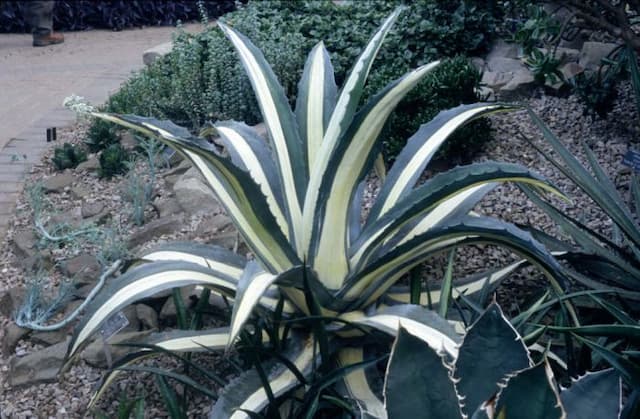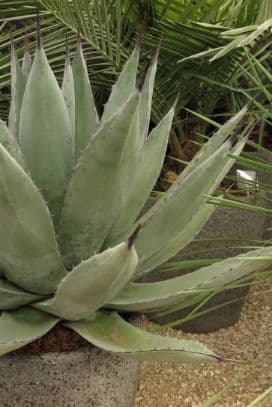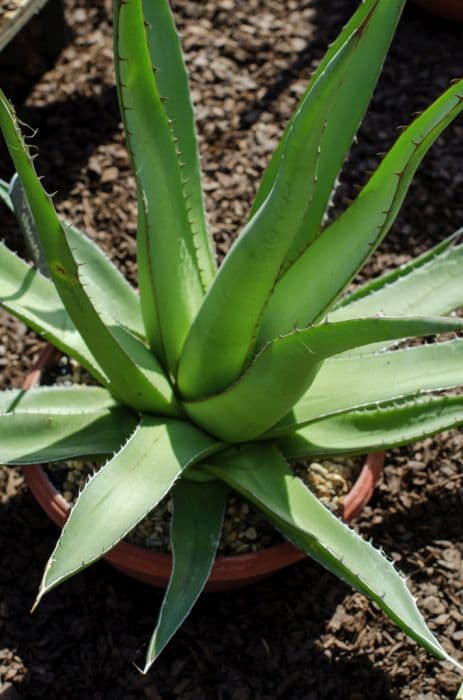Lilyturf Liriope muscari 'Monroe White'

ABOUT
The Liriope muscari 'Monroe White', commonly known as Monroe White Lilyturf, is a perennial plant known for its graceful, grass-like foliage and attractive flower spikes. The leaves are narrow, strap-shaped, and form a dense, mound-like clump. They present a dark green color that remains vibrant throughout the growing season and even into the winter months in milder climates. The standout feature of the Monroe White Lilyturf is its delicate flower display. During the late summer to early fall period, the plant produces tall, erect stalks that are topped with dense clusters of small, white blossoms. These flowers are reminiscent of grape hyacinth, hence the botanical name muscari. After the blooming period, the flowers give way to round, berry-like seeds that add further interest to the plant's appearance. These seeds often start off as a light green and gradually mature to a darker shade, sometimes blackish. Monroe White Lilyturf is popular among gardeners not just for its ornamental qualities, but also for its hardiness and ability to thrive in a variety of conditions. The textural contrast provided by its leaves, along with the bright white blooms, makes it a suitable choice for ground cover, borders, or as an accent in a mixed garden bed.
About this plant
 Names
NamesFamily
Asparagaceae.
Synonyms
Lilyturf, Monkey Grass, Border Grass, Evergreen Giant.
Common names
Liriope muscari 'Monroe White'.
 Toxicity
ToxicityTo humans
Lilyturf is generally considered non-toxic to humans. There is limited information available about its toxicity, but it is not commonly known to cause poisoning when touched or ingested. Therefore, it is unlikely to have significant consequences if accidentally consumed in small quantities.
To pets
Lilyturf is considered mildly toxic to pets, especially cats and dogs. If a pet ingests a substantial amount of the plant, it may experience symptoms such as vomiting, diarrhea, abdominal pain, and reduced appetite. It's important to keep an eye on pets around this plant and consult a veterinarian if you suspect your pet has consumed a large amount of it.
 Characteristics
CharacteristicsLife cycle
Perennials
Foliage type
Evergreen
Color of leaves
Green
Flower color
White
Height
1 foot (30 cm)
Spread
1 foot (30 cm)
Plant type
Herb
Hardiness zones
6
Native area
East Asia
Benefits
 General Benefits
General Benefits- Hardy and Low Maintenance: Liriope muscari 'Monroe White' is known for its toughness and adaptability, making it a low-maintenance choice for landscape plantings.
- Ground Cover: It serves as an excellent ground cover, spreading to form dense clumps that suppress weeds and reduce soil erosion.
- Drought Tolerance: Once established, this plant exhibits good drought tolerance, reducing the need for frequent waterings.
- Variegated Foliage: The plant features attractive, variegated foliage that adds visual interest to garden spaces throughout the year.
- Tolerant of Various Soil Types: It can thrive in a range of soil conditions, from acidic to slightly alkaline, making it versatile for different garden soils.
- Shade Tolerance: Liriope muscari 'Monroe White' can grow well in shaded areas where many other plants may struggle.
- Ornamental Flowers: It produces delicate white flowers that add a subtle ornamental charm to garden displays and landscapes.
- Border Planting: Its compact growth habit makes it ideal for use as edging or for border plantings in garden beds.
- Winter Interest: With its evergreen foliage, it provides color and texture in the garden even during the winter months.
- Resistant to Pests and Diseases: It has a good resistance to common pests and diseases, which helps in keeping the plant healthy with minimal intervention.
 Medical Properties
Medical PropertiesThis plant is not used for medical purposes.
 Air-purifying Qualities
Air-purifying QualitiesThis plant is not specifically known for air purifying qualities.
 Other Uses
Other Uses- Lilyturf can be used in a terrarium or fairy garden setting because its dense foliage and white flowers can add a sense of lushness and enchanted beauty to miniature landscapes.
- The fibers from Lilyturf leaves can be used for crafting small, decorative items such as woven baskets or mats, tapping into traditional uses of plant fibers.
- Lilyturf can be planted over septic tank drain fields, where its root structure can help in the absorption and filtration of effluent water without deep roots that could damage the system.
- The dense growth habit of Lilyturf makes it suitable as a living mulch to suppress weeds and retain soil moisture in garden beds.
- It can be planted on sloped areas to prevent soil erosion due to its mat-forming capability that holds the soil in place.
- Lilyturf is useful in sensory gardens; its soft foliage and spikes of white flowers provide a tactile and visual experience for visitors.
- In landscape design, Lilyturf can be used to create patterns or 'green' borders along walkways where other plants may struggle to grow.
- The plant can serve as a natural indicator of soil moisture, with signs of wilt indicating the need for watering, thus assisting in water management in gardens.
- Lilyturf, being resistant to damage from foot traffic, can be used as an alternative to traditional lawn in low-use areas of the garden.
- For photographers and artists, Lilyturf offers an aesthetically pleasing subject or backdrop with its contrasting green foliage and delicate white blooms.
Interesting Facts
 Feng Shui
Feng ShuiThe Lilyturf is not used in Feng Shui practice.
 Zodiac Sign Compitability
Zodiac Sign CompitabilityThe Lilyturf is not used in astrology practice.
 Plant Symbolism
Plant Symbolism- Persistence - Liriope, also known as Lilyturf, is a hardy and robust plant that can thrive under many conditions; it symbolizes the ability to persevere and endure through challenges.
- Humility - The subtle white flowers of the 'Monroe White' variety offer a symbol of modesty and understated beauty, reflecting a preference for quiet elegance over showiness.
- Adaptability - Lilyturf's versatility in various landscapes and conditions reflects the symbolic meaning of adaptability and the ability to thrive in different environments or circumstances.
- Longevity - Just as the Liriope plant is perennial and comes back year after year, it represents long-lasting life, relationships, or endeavors.
- Prosperity - Liriope's lush, evergreen leaves are often associated with growth and abundance, symbolizing prosperity and success in one's endeavors.
 Water
WaterTo water Lilyturf adequately, you should aim to keep the soil consistently moist, especially during the growing season. Water the plant once a week with about 1 to 1.5 gallons of water, making sure to soak the soil thoroughly. During hot, dry periods, you may need to water twice a week, whereas in cooler, rainy conditions, you can reduce watering. Cut back on watering in the winter when the plant is not actively growing. It's important not to let the soil become soggy, as this can lead to root rot.
 Light
LightLilyturf thrives in partial to full shade, making it an excellent plant for areas under trees or on the north side of buildings where sunlight is not harsh. The best spot for Lilyturf would be one where it can receive filtered light or morning sun followed by afternoon shade. It can tolerate some sun, but too much direct sunlight may scorch the leaves.
 Temperature
TemperatureLilyturf prefers temperature conditions that are moderate and can survive in a range where the minimum temperature does not fall below 10°F and the maximum temperature does not exceed 90°F. The ideal temperature for this plant ranges from 50°F to 75°F. It's hardy and can tolerate a wide range of temperatures, making it suitable for cultivation in many regions.
 Pruning
PruningLilyturf benefits from pruning to remove old, tattered foliage and promote fresh, new growth. Prune in the late winter or very early spring before new growth begins. Cut back the entire plant to about 3 inches from the ground every 2 to 3 years. Regular trimming of brown tips can be done as needed throughout the year to maintain aesthetics.
 Cleaning
CleaningAs needed
 Soil
SoilThe best soil mix for Monroe White Lilyturf should be well-draining and rich in organic matter. A blend of garden soil, peat moss, and perlite or sand works well. Aim for a slightly acidic to neutral soil pH, ideally between 5.5 and 7.
 Repotting
RepottingMonroe White Lilyturf should be repotted every 2 to 3 years or when it becomes root-bound. Spring or early summer is the best time to repot this plant to minimize stress and encourage quick recovery.
 Humidity & Misting
Humidity & MistingMonroe White Lilyturf prefers moderate to high humidity but is quite adaptable. Aiming for a humidity level between 40-60% is generally conducive to healthy growth for this plant.
 Suitable locations
Suitable locationsIndoor
Place Monroe White Lilyturf in bright, indirect light indoors.
Outdoor
Plant Monroe White Lilyturf in partial to full shade outdoors.
Hardiness zone
5-10 USDA
 Life cycle
Life cycleLiriope muscari 'Monroe White', commonly known as Lilyturf or Monroe White Liriope, begins its life as a seed or by vegetative propagation through division. After germination or separation from the parent plant, the seedling or young plant establishes a root system and produces tufts of strappy, green foliage. As it matures, Lilyturf forms dense, slowly expanding clumps via rhizomatous growth. During late summer to early fall, it produces tall spikes of small, white, grape-hyacinth-like flowers that rise above the foliage. After flowering, the plant develops berry-like, blue-black fruit, which may contribute to seed dispersal. The plant then enters a period of dormancy during the winter, where growth slows down significantly, before resuming growth in the spring.
 Propogation
PropogationPropogation time
Spring-Early Summer
Liriope muscari 'Monroe White', commonly known as Lilyturf or Monroe White Lilyturf, is typically propagated through division, which is the most popular method for this perennial plant. The best time to propagate Monroe White Lilyturf by division is in the early spring or late fall when the plant is not actively growing. To propagate, carefully dig up the clump of the plant and use a sharp knife or a spade to divide the clump into smaller sections, ensuring that each section has a good amount of roots and several shoots. These divisions can then be replanted in prepared soil, spaced about 12 inches (approximately 30 centimeters) apart to allow for adequate room for growth. Water the new plantings thoroughly to establish. This method of propagation allows gardeners to rapidly increase their stock of Lilyturf while maintaining the varietal characteristics of 'Monroe White'.









